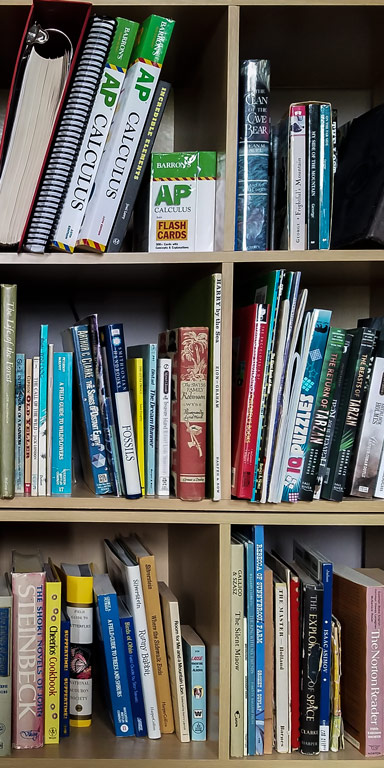“A place for everything, and everything in its place.”
Find a good location for all your course materials. You’ll need them daily. If you’re using dry erase markers, hand written notes, or flash drives, know where your study supplies will be stored when you’re not using them. Avoid setbacks and wasted time by keeping your stuff in a secure and accessible place, where it won’t be stolen or damaged. Tablets, chargers, USB cables, and surge protectors. No extreme temperatures or humidity for electronics. No tumbling off tables from pets pulling on cords. No drinks spilling onto keyboards. No food dropping onto textbooks or homework. Not leaving them in your unattended backpack, or visible in the car.
Vary the places you study. Have at least one or two reliable study spots. These should be your go-to, default study areas. However, you can improve your ability to recall what you’re learning by studying the same material in different locations. Sit in different places in the room, like in the arm chair or at your desk. In different rooms, like at the kitchen table or in the family room, or even in the bathroom. In your parked car. Outside on your front porch or at the park or the library.
Using a specific location to remember is highly effective learning strategy. Our brains are innately wired to recall locations. If you're learning about atoms, imagine the parts of an atom as a watermelon in your fridge. Or make an atom with fruit on your kitchen table. Label the fruit parts with sticky notes. Picture an atom as a space ship floating above your back yard. Picture yourself inside an atom in your swimming pool. Create Adam's(atom) fantasy neighborhood with a special set of sidewalks for the electrons, a separate home for protons and the neutron family's house. Use your natural ability to remember location to make learning easier.

